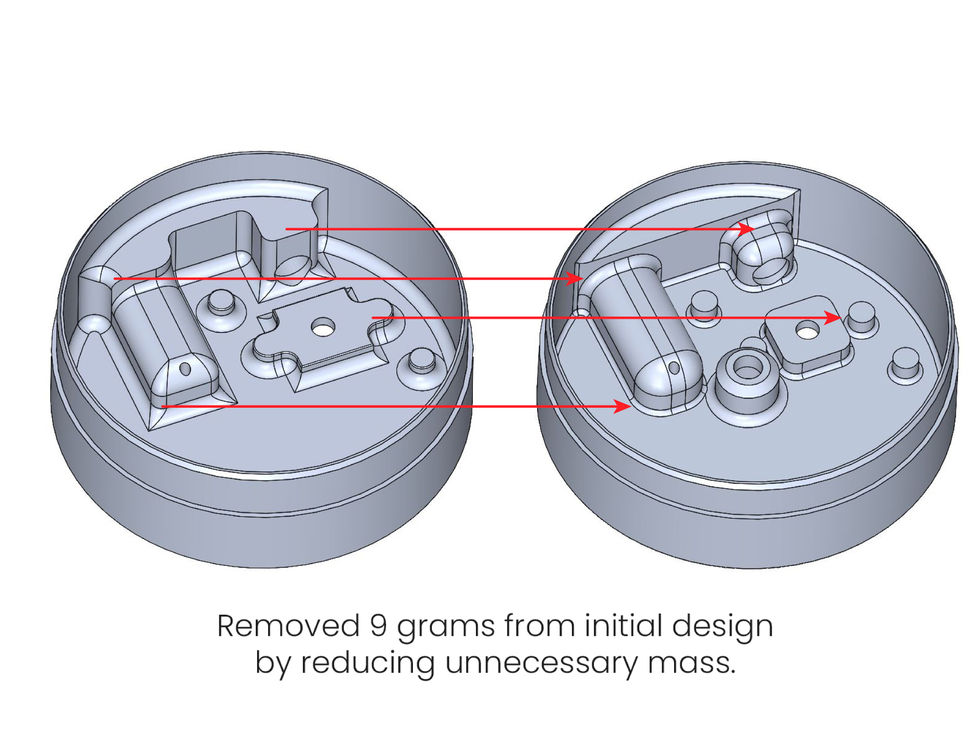
Ascend
At Roam Robotics
Roam Robotics
Mechanical Design Engineer
At Roam Robotics, I designed several key components within the exoskeleton system. These parts included the pneumatic actuator, the accumulator and the fabrication kit. Through these tasks I gained in experience in structural textile design, FEA analysis, injection molding, forging, and DFMEA.
Strengthening the Ribs
The ribs are a critical components to the actuator. They direct the torque from the actuator into the users legs. Without the ribs, the actuator would be a squirming balloon. As I was improving the torque of the actuator this was causing the ribs to yield. As the actuator torque improved, the ribs performance decreased. The actuator was applying a considerable amount of bending forces to the ribs, causing them to twist. Myself and another engineer designed a rib with two ears that mounted on the shaft. The increase in shaft contact width greatly improved the ribs resistance to twisting. Extensive FEA, strength testing, fixture design, and compression testing and bending testing was done to compare the two designs.
Designing the Fabrication Kit
The Fabrication Kit is a series of tools used by the Orthotist to locate the knee center and establish the mounting surfaces of the custom carbon fiber cuffs. This is easier said then done as there are no features on the human to datum from. Also, the knee center axis is a critical dimension as it establishes the center of rotation of the device. The solution we arrived at was to for the Orthotist to mark knee center on the medial and lateral sides of the knee then use a bar clamp to locate both marks which establishes the axis. Finding the knee center is a problem throughout the Orthotic industry and we were pursuing a patent on this concept.
Optimizing Torque Output
The torque requirement for the Ascend device was to supply >7 Nm at extension and >17 Nm at flexion. Through varying the dimensions of the actuator sleeve, experimenting with materials and testing with a load cell, I successfully designed a textile actuator to meet these requirements. In addition to improving the torque by 7x, I was able to improve the lifecycle of the actuator by 10x. Solving the lifecycle problem required some creative use of lap joints in the sewing machine.
Reinforcing the Accumulator
The accumulator holds pressurized air of ~350kPa prior to filling the actuator. During a take-home test of the actuator, one of the endcaps dislodged from the tube body. This resulted in a thorough study of why this failure occurred and how to prevent it from happening again. I devised a temporary solution to give us time to understand the failure while pursuing the permanent solution. Extensive hydrostatic testing, cycle testing, thread strength calculations, o-ring specifications and FEA analysis was conducted to arrive at the permanent solution.
Carbon Fiber Integration
Developing the Fabrication Kit required an extensive understanding of the carbon fiber casting process. I worked closely with the in-house technician to understand the current process, learn where faults can occur and develop our own tools to aid in brace fabrication.






































